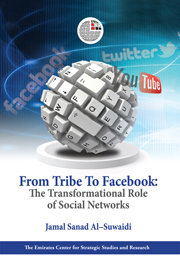Book contents
- Frontmatter
- Contents
- Acknowledgments
- Introduction
- Keywords
- Scope of the Study
- Previous Studies
- Social Networks: Concept and Role
- Statistical Indicators of Main Social Networks
- The Social Networking Age
- Data-entry Potential of Social Networks
- Impact of Social Networks
- Prospects for the Relationship between Traditional Media and Social Networks
- Legal Problems Associated with the Use of Social Networks
- Social Networks: Future Prospects
- Conclusion: Various Future Prospects
- Notes
- Bibliography
- Index
Prospects for the Relationship between Traditional Media and Social Networks
Published online by Cambridge University Press: 05 September 2014
- Frontmatter
- Contents
- Acknowledgments
- Introduction
- Keywords
- Scope of the Study
- Previous Studies
- Social Networks: Concept and Role
- Statistical Indicators of Main Social Networks
- The Social Networking Age
- Data-entry Potential of Social Networks
- Impact of Social Networks
- Prospects for the Relationship between Traditional Media and Social Networks
- Legal Problems Associated with the Use of Social Networks
- Social Networks: Future Prospects
- Conclusion: Various Future Prospects
- Notes
- Bibliography
- Index
Summary
Despite the debate raised by researchers over whether traditional media will end in light of the growing role of social networks and the evolution of media from ‘institutional media’ to ‘individual media,’ we are for the moment witnessing cooperation, interconnectedness and support between traditional media and social networks. Users of sites such as YouTube heavily use video clips from talk shows, and sometimes edit them to lend irony, humor or criticism to certain political figures. Meanwhile, many satellite channels are now using footage posted on social network sites as televised news material; the news content of traditional media sometimes has to rely on information from social networks such as Twitter or Facebook. Moreover, the posts or tweets of certain famous political figures are at the forefront of news in traditional media in many cases, especially since there are figures and leaders who now prefer to communicate more directly and effectively with the public through social networks. The events of January 25, 2011 in Egypt are a model for interaction between traditional media and social networks; such networks did not themselves lead to the outbreak of sweeping popular protests which ousted the regime of former Egyptian President Mohammad Hosni Mubarak, which was a result of the combined effects of various media tools, means and societal conditions. Personal communications, catchy revolutionary slogans, the appeal of the Tunisian example inspiring Egyptian youth, partisan newspapers, Arab satellite channels (particularly Al Jazeera), mobile phones and the participation of opinion makers and prominent society celebrities in the protests from the beginning, all contributed to the revolution, along with Facebook invitations to mobilize demonstrators.
- Type
- Chapter
- Information
- From Tribe to FacebookThe Transformational Role of Social Media, pp. 100 - 104Publisher: Emirates Center for Strategic Studies and ResearchPrint publication year: 2013



